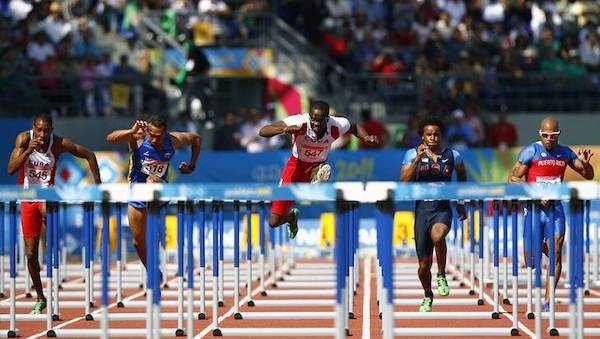Economic Conceptions that Must be Addressed in the Cuban Reality
It is necessary, at the very least, to question the concepts inherited from the former Soviet model if we intend that the Cuban economy move towards development.
In recent times, we hear the Cuban authorities say that the country not only needs investments but that they need to be efficient. Also, that the “golden rule” is to ensure that they are profitable and achieve the expected results.
We assume that when the planning authorities talk about this golden rule they are not only referring to expected results regarding concrete measurements such as tons, square meters or other production units, but also to the monetary results so that each investment produces a return for the owner or investor who made the investment instead of being diverted by the State to other projects.
If so, we would be operating with a new language, similar to that of years past, when the authorities of the Central Bank of Cuba (BCC) advocated that bank loans be granted only in the case of an almost certain return or with sufficient guarantees of repayment. The understanding was that it was undesirable to grant financing simply at the direction of a government organism other than the credit and risk committee of the banking institution.
Taking these examples, it appears that many economic conceptions inherited from the former Soviet model of economic management continue to be applied. It is necessary, at the very least, to question these conceptions if the Cuban economy is intended to move towards development in the year 2030.
There are norms that must be evaluated, regardless of who owns the means of production, or what social system a country has, or without the need to abandon the criterion - essential to the model - of state ownership over the fundamental means of production.
In addition to the aforementioned golden rule, some other principles may be identified. Almost all of them are intertwined with each other based on the preeminence of social property. They can be described as follows:
- Investment is made to obtain financial returns, not only to produce products or services.
- When investing in an industry, a stable supply of raw materials and capital for periodic maintenance of equipment must also be guaranteed.
- The regulation of prices or the interference of the State in pricing mechanisms must be minimal.
- Salaries in each State enterprise must be linked to the real results produced by that company.
- Profitable enterprises must be able to reinvest profits or obtain financing to continue creating new value.
- The new values created in an enterprise do not necessarily have to be material goods.
- The concept of social property in the production goods is for the State to appropriate the profits provided by that property and distribute it for the well-being of all; it is not for the State to manage and administer the property.
- Planning should not become a straitjacket for State enterprises.
- State monopoly of foreign trade damages the economy, just as any other monopoly.
- It is necessary to define what level of concentration of wealth is intolerable.
- The concession of land in usufruct, or private property, or any other isolated measure, does not resolve the fundamental issue of agricultural production.[1]
In a market economy, if a product in demand is scarce, theoretically the possibility of higher returns to those who risk money to produce it increases, and in the long run the balance is restored.
In Cuba the idea that it is necessary to manufacture production units for the people has prevailed without always considering the cost of production, the cost of expanding production or the profit from the funds invested. In the long run, in order to maintain the production of these same units, the State often needs to channel more and more funds from other sources, and it is hard to maintain production at the same initial levels. Or maintenance is cut, and an industry is left to deteriorate due to lack of investments and then it has to be raised again from scratch. Or the stable supply of raw materials and inputs for production is not guaranteed.
Cuba today suffers innumerable problems of decapitalization of its State enterprises. Industry capacity plans are not met or industries are hampered from lack of working capital. Returns are not calculated according to the golden rule. As a result, if we achieve productive enterprises they are incapable of competing internationally or even meeting internal demand and they produce inferior products.
Economists and other analysts rightly say that capital investment is necessary in order to revive the economy. They analyze the index of new investments in total GDP (Gross Domestic Product) and conclude that without additional investment there can be no development. Today, Cuba’s investment rate is below that of all other Latin American countries, an average of 10% of GDP.
However, there is something as harmful as disinvestment, and it is to allocate resources to an industry and then allow that industry to operate at medium capacity or suffer operational problems because it lacks the resources to acquire the necessary raw materials so that the investment that is made produces results. This amounts to a waste of the financial resources used in the initial investment.

In order to ensure consumption by the majority of the population, you do not need to regulate prices. There are other approaches:
- Increase stimulation and incentives to produce (by everyone).
- Grant tax incentives.
- Promote competition.
- More active participation of the State in the supply of scarce products and at prices that guide the rest of the producers (without racking up losses for the State).
- Provide better salaries for those who produce values and wealth, etc.
In other words, let us use economic methods to obtain desired results and not coercive measures such as price controls. The State must move from direct control of the economic life of the nation, to indirectly regulating it, using multiple existing mechanisms, including taxes.
Cuban State enterprises are hampered by controls on the currency they generate. This means that exporting companies, or those that produce for the domestic market in CUC (Cuban Convertible Pesos), cannot manage the revenues they generate, or, at best, can barely retain enough to pay for the raw materials they need. The mechanism for assigning the so-called Liquidity Certificates (for the use of foreign currency), has lengthened over time and has not allowed companies to have, control or at least plan for the use of the foreign exchange resources that they generate.
In Cuba, planning has become a straitjacket disconnected from reality.
- During all these years, we have observed companies over spending because “we must spend what is approved in the plan so that next year they do not take it away from us”.
- Donations offered by foreign entities are not accepted simply because they were not contemplated by the plan (regardless of their value to the enterprise).
- Ideas cannot be implemented because they were not in the plan from the outset (even if it is determined that implementing those ideas is necessary to meet the plan).
- Or plans become obsolete because life is richer, and it is always difficult to predict how international markets will behave (but the plan is immovable or it is extremely difficult to revise).
- Or an immense amount of time and resources is wasted justifying the distortions of reality created by the plan or blaming deficiencies on bad preparation of the plan instead of solving the problems that it creates every day.
- Or the over-compensation of workers in companies that have over-fulfilled the plan, but that hardly produce profits, compared to the under-compensation of those in companies that did not meet the plan, but that systematically provide the State with profits on the resources invested.
The proposals described above may seem unattractive to decision makers or may be questioned by other analysts. But practice is the criterion of truth, and for more than 60 years the socialist economic model and its implementation by Cuba has not yielded the projected results. Why is it then so difficult to study/analyze the way economies work in other countries? We know there is no rigid model of socialism. Each country builds its own and there is no pattern to follow. Again, let us consider why not come together to develop how the Cuban model or Cuban socialism should be built?
Why not put into practice the documents approved by the Party Congress or the Cuban Parliament, which include the Guidelines, the Conceptualization of the Model or the Strategic Plan until 2030? What is missing? Or is it that there is still no political will to take on those challenges?
[1] All the principles listed are analyzed in detail in a more comprehensive work that will be published in the future, as we will need to address them in the short or medium term.

